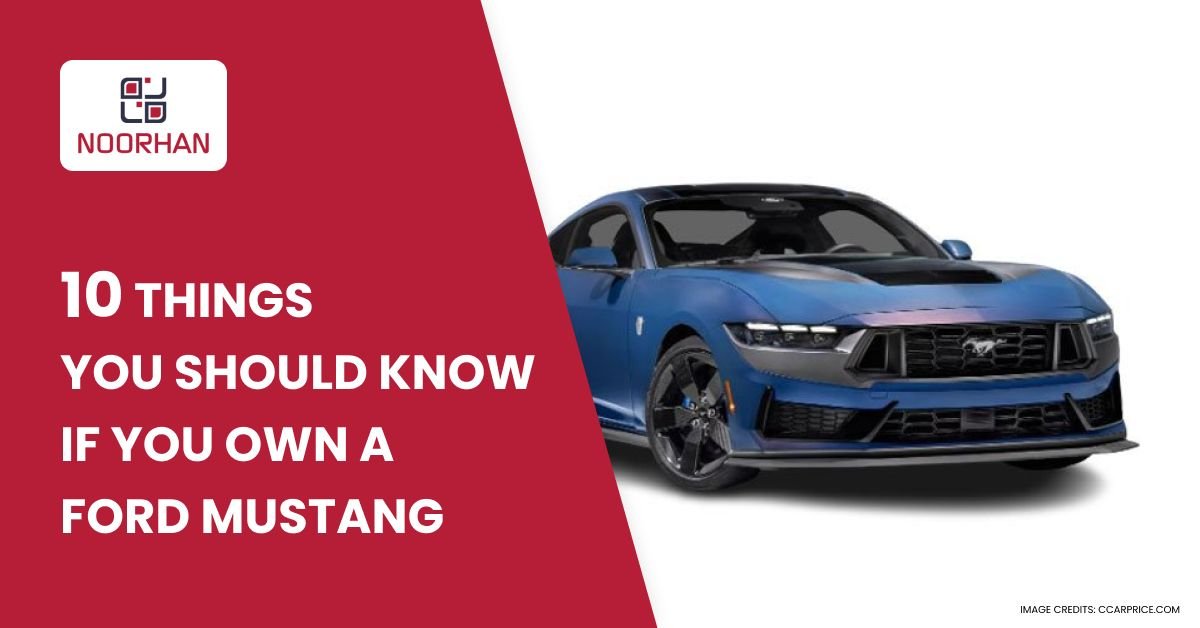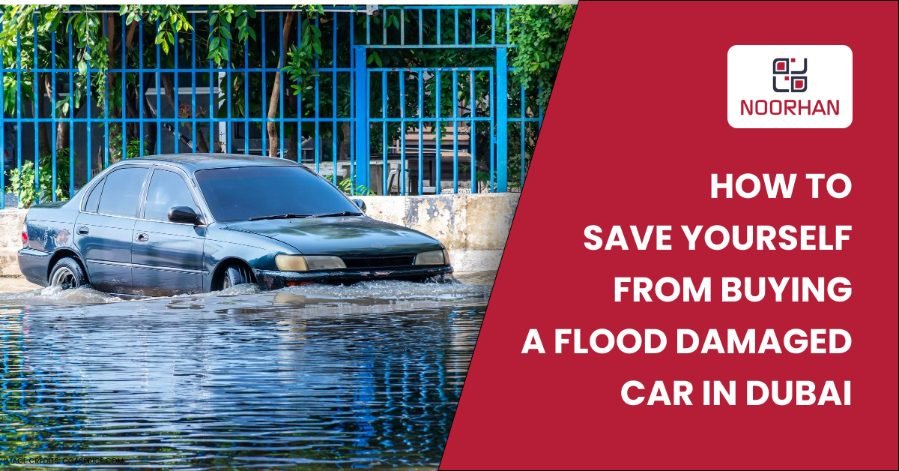Everything you need to know when buying car spare parts
So, your car has finally decided to cause a scene, and only one part is at fault. If you’ve never looked for a new car component before, regardless of whatever it may be, there’s a good possibility you may feel a bit scared. This is your car, after all, and you depend on it every day.
When it comes to maintaining your car, the importance of buying the right spare parts cannot be overstated. But with the sea of options available in the market, choosing the right one for your car can be challenging if you’re not an expert.
We are here to be your guiding light and empower you with the knowledge it takes to choose the right spare part for your beloved car.
So let’s navigate the crazy world of car spare parts to make sure your car gets nothing but the best.
Table of Contents
- Identifying the right spare parts for your car
- Where can you find the right spare parts for your car?
- How to avoid fake car parts?
- Buying second-hand spare parts vs new ones
- 12 car parts you need to replace more often
- DIY vs professional installation
- Maintenance and care tips different for car parts
- Final thoughts
Identifying the right spare parts for your car
Once you’ve identified which component of your car needs changing, you better start looking for the right part for your specific make and model. A single part from the same manufacturer can have numerous variations depending on the model and year of your car. Follow these simple steps to identify what exactly your vehicle needs.
1. Vehicle Identification Number:
This is your car’s fingerprints as no two vehicles have the same VIN. You can look up your manufacturer’s data tables and locate the precise component using this number.
2. Cracking the Code:
Sometimes, all you gotta do is look beneath the grime and grease on the part and find the codes yourself. These codes are like golden keys to track down a specific part in your manufacturer’s catalogue.
3. The Showdown:
It’s time for comparison! Take that old part to a second-hand car parts shop and examine every nook and cranny. Make sure every component and fixing point aligns perfectly with the replacement. It’s a match made in auto heaven!
Where can you find the right spare parts for your car?
You won’t get the part you need if you don’t know who is selling it. Luckily, there are many places to find them and get your car back on the road.
1. Auto Parts Stores:
These are specialised stores that sell auto parts and can supply all of your requirements. They have a large stock of parts available, ranging from accessories to critical parts. You will also find experienced staff at these stores to help you out with your purchase.
2. Authorised Dealerships:
If you can’t trust a local store and need only the original equipment manufacturer (OEM) components, you should buy your car’s spare parts from an authorised dealership for your brand of vehicle. They provide genuine, authentic components that are specific to your car, ensuring optimum performance and compatibility.
3. Online retailers:
Just like clothes, you can buy spare parts for your car online. This way, you can look for the parts from the comfort of your home with the accessibility and convenience of online stores. But make sure to buy only from trustworthy retailers with stellar reviews from previous clients.
4. Salvage Yards:
Also known as junkyards, these salvage yards can prove to be a gold mine for tracking down used auto parts at budget-friendly prices. These yards recover usable parts from wrecked cars, giving budget-conscious people a practical choice. But before you buy, make sure you do a quick quality check for compatibility and quality.
5. Local independent auto repair shops:
You can find regularly used spare components at these shops. They may be a practical choice, particularly if you value individualised support and direction from knowledgeable experts.
6. Forums and Classifieds for Automobiles:
If you’re looking for specific or rare parts, online forums and classifieds might be a great resource. These websites link auto enthusiasts who might be exchanging or selling the parts you require.
When making purchases, don’t take any chances. Avoid dealing with anyone or any organisation that won’t give you a receipt or other kind of evidence of purchase. Verify the seller’s legitimacy and make sure there is a written record of the transaction to protect yourself, especially when buying online.
You can always buy genuine car spare parts from us
Noorhan is a great choice when you’re looking to buy genuine and high-quality auto parts in Dubai. We are committed to providing top-notch products and exceptional customer service.
Our website provides a wide range of high-quality, well-known manufacturers’ components, all of which are guaranteed to operate and last. And our team is always there to assist you select the right component for your car.
Suggested Article:
Top 10 Most Popular Cars in Dubai – List of 10 most popular cars

How to avoid fake car parts?
The market for auto parts is highly competitive. Manufacturers are working hard to maintain their position at the top and satisfy customer requests. However, some distributors and sellers have turned it into gambling by selling fake replacements and maximizing their profits.
So if something in your car needs a replacement, you better be careful as chances are you might end up with a fake product. Here are a few tips to help you buy genuine car parts.
1. Research your sellers:
Before purchasing spare parts from a shop or authorized dealer, do a background check on their reputation. Seek feedback from friends or check for visible authorization documents. When shopping online, be cautious with the information you share.
2. Conduct thorough research:
Prioritize detailed research on the spare parts you plan to buy. Explore different brands and compare prices to find alternatives that serve the same purpose at better prices. This helps you save money and ensures the genuineness of the product.
3. Verify OEM numbers:
Cross-check the OEM number on the parts with the actual manufacturers. Fake spare parts often have mismatched OEM numbers.
4. Review the return policy:
Pay attention to the return policy when purchasing from online stores. Having a reasonable timeframe for returns allows you to assess the authenticity of the spare parts upon arrival. If uncomfortable or suspicious, you can return the product.
5. Avoid tempting offers:
Be cautious of online stores known for selling counterfeit products. Don’t fall for deals that seem too good to be true, as they often mix genuine and fake products. Choose reasonably priced spare parts to minimize the risk of buying fake items.
6. Consider haggling:
Engage in price comparison and negotiation while buying spare parts. Different dealers may have varied profit margins. Through haggling, you may find dealers offering genuine products at lower prices. Verify the authenticity of the parts even after securing a better deal.
Beware of misleading pricing strategies that could cause you to pay more or the same as the actual price, even if the spare parts were initially bought for a low price. Avoid using fake replacements in your vehicle as it can potentially damage the engine. Instead, choose genuine replacement parts from reliable dealers. You can also check out our website for dependable and authentic options.
Along with investing in replacement parts when necessary, keeping your car in top shape might help avoid such circumstances altogether. The frequency of spare part replacements can be significantly impacted by your driving habits.
Suggested Article:

Buying second-hand spare parts vs new ones
The new parts are in the best condition and will definitely give optimal performance. They haven’t been the victim of wear and tear, which means reliability and longevity. With new parts, you will have peace of mind, knowing that you’re buying the latest technology and specifications designed specifically for your vehicle. And that new part will come with a warranty, providing an extra layer of protection.
On the other hand, second-hand parts will come at a lower cost allowing you to save some hard-earned cash while still getting the job done. However, there are risks to consider. Second-hand parts may have experienced wear and tear, which means a shorter lifespan and compromising performance. And how can we not talk about the challenge of finding the right part that’s a perfect fit for your car?
Skip second-hand for these car spare parts
Certain car parts should never be purchased second-hand as they can pose potential safety risks, reliability concerns, and limited lifespan. It’s recommended to avoid buying the following parts used:
Exhaust Systems
These components considerably enhance the likelihood of developing holes, cracks, and fissures over time. Choosing a used system could lead to performance problems and a shorter lifespan.
Brake Plates:
It is suggested that you buy new brake plates for maximum durability and safety. These are made to degrade over time as a result of the friction the brake callipers produce.
Oil Filter:
An oil filter has a limited lifespan and loses efficiency over time. Because oil is crucial to the health of the engine, using a fresh oil filter is imperative to prevent potential damage brought on by tainted oil throughout the engine’s components.
Wiper Blades:
If wiper blades have gathered dirt and grime, it may be challenging to clean them thoroughly. This accumulation could have a significant impact on how well they are able to keep the clarity of your windows.
For older vehicles or non-essential parts, using second-hand parts can be a wise decision. However, purchasing new parts might be the right thing if you want your automobile to perform as smoothly as the first time you drove it. The added expense would be justified by the security.
Suggested Article:

12 car parts you need to replace more often
Maintaining your car’s longevity requires replacing certain parts over time. Here are some essential components you’ll likely need to replace more often than the rest.
- Alternator: Keeps your battery charged and powers the electrical system. Replace it after 5-6 years if it’s causing issues.
- Air Filter: Protects your engine from dirt. Change it annually, especially if you live in a dusty area.
- Battery: Without it, your car won’t function. Expect a lifespan of 3-5 years, depending on usage and climate.
- Brake Pads: Essential for safe driving. Replace every 3-5 years, sooner for heavy vehicles or city driving.
- Timing Belt: Crucial for engine operation. Replace it every 8 years. Check your manual if your car has a timing chain instead.
- Fuel Pump: Ensure it works properly by filling up before the tank is empty.
- Water Pump: Circulates coolant to prevent overheating. May need replacement every 6-8 years if leaking.
- Lights: Bulbs burn out over time, typically lasting 1,000 hours or 5-7 years.
- Oil: Regular oil change every 3-6 months keeps your engine lubricated and clean.
- Spark Plugs: Replace them if you experience issues with fuel efficiency or starting your car.
- Tires: Inflate them properly and replace them after 80,000 km or 5-7 years. Use separate sets for summer and winter.
- Wiper Blades: Ensure clear visibility by replacing them when streaks appear.
By staying proactive with replacements, you’ll keep your car running smoothly and avoid potential problems down the road.
DIY vs professional installation
When it comes down to replacing car parts, you can either tackle the task yourself or seek professional installation. Both approaches have their advantages and considerations.
Going for DIY replacement can save you money and provide a sense of accomplishment. To ensure a successful outcome, it’s crucial to gather the necessary knowledge and resources. User and owner manuals specific to your vehicle can help in this matter. You can also turn to online forums and web guides to get some tips and guidance, but it’s essential to cross-reference information and verify its accuracy.
On the other hand, the professional installation provides expertise and convenience. Trained technicians have the knowledge and experience to handle complex installations effectively. Plus it also often comes with warranties and guarantees, offering peace of mind.
What’s our verdict?
The decision between DIY and professional installation depends on a number of variables, including your level of expertise, the difficulty of the job, and the resources that are available. While DIY can be satisfying and economical for smaller replacements, complex or crucial parts may need the knowledge of experts to avoid potential errors or safety issues.
Maintenance and care tips different for car parts
The durability, functionality, and safety of your car depend on the maintenance and care given to its components. You can maintain your car’s components in top shape and save money on repairs by paying attention to a few essential suggestions. For various automotive parts, below are some maintenance and care suggestions:
Engine:
According to the manufacturer’s recommendations, check and replace the engine oil, air filter, and spark plugs on a regular basis. Make sure the coolant is at the proper amount by monitoring it. To avoid breakdowns, regularly check and replace worn belts and hoses.
Brakes:
Regularly inspect your brakes, and replace any worn brake pads or rotors right away. Check the amount of your brake fluid frequently, and have it drained as needed. Avoid driving aggressively to save excessive wear and tear on your braking system.
Tyres:
Make sure your tyres are inflated to the proper pressure on a regular basis. Regular tyre rotation will ensure even wear. When the tyres start to wear out, check the tread depth and replace the tyres. Proper wheel alignment and tyre balancing improve fuel efficiency and increase tyre life.
Battery:
To prevent corrosion, regularly clean the battery’s terminals and connections. If the battery is getting close to its end of life, check the charge and replace it.
Make sure the battery is placed firmly to avoid vibrations that can harm internal parts.
Suspension and Steering:
Regularly check suspension parts for wear indicators like worn-out bushings or leaking shocks. Verify the power steering fluid level and take immediate care of any steering problems.
Lights:
Check and maintain your vehicle’s turn signals, taillights, and headlights on a regular basis. As soon as a bulb burns out, replace it to ensure visibility and abide by traffic laws.
Fluids:
Check and top off fluids including coolant, gearbox fluid, brake fluid and power steering fluid on a regular basis. For fluid changes and flushes, adhere to the manufacturer’s instructions.
Regular Maintenance:
Follow the owner’s manual for your car’s suggested maintenance regimen. Regular inspections and upkeep performed by a trained mechanic can identify potential problems early and save more serious concerns in the future.
By following these maintenance and care recommendations, you can ensure that your car’s components are reliable, safe, and working as well as they possibly can. For thorough maintenance instructions, always consult your vehicle’s owner’s manual and, if necessary, seek expert assistance.
Final thoughts
In conclusion, equipping yourself with the knowledge and understanding of buying spare parts for your car is essential for maintaining its performance and longevity. By using the advice and recommendations in this comprehensive guide, you can choose high-quality components, make educated judgements, and guarantee a simple and successful shopping process. Take control of your vehicle’s maintenance and benefit from durable replacement components for years to come.




























































